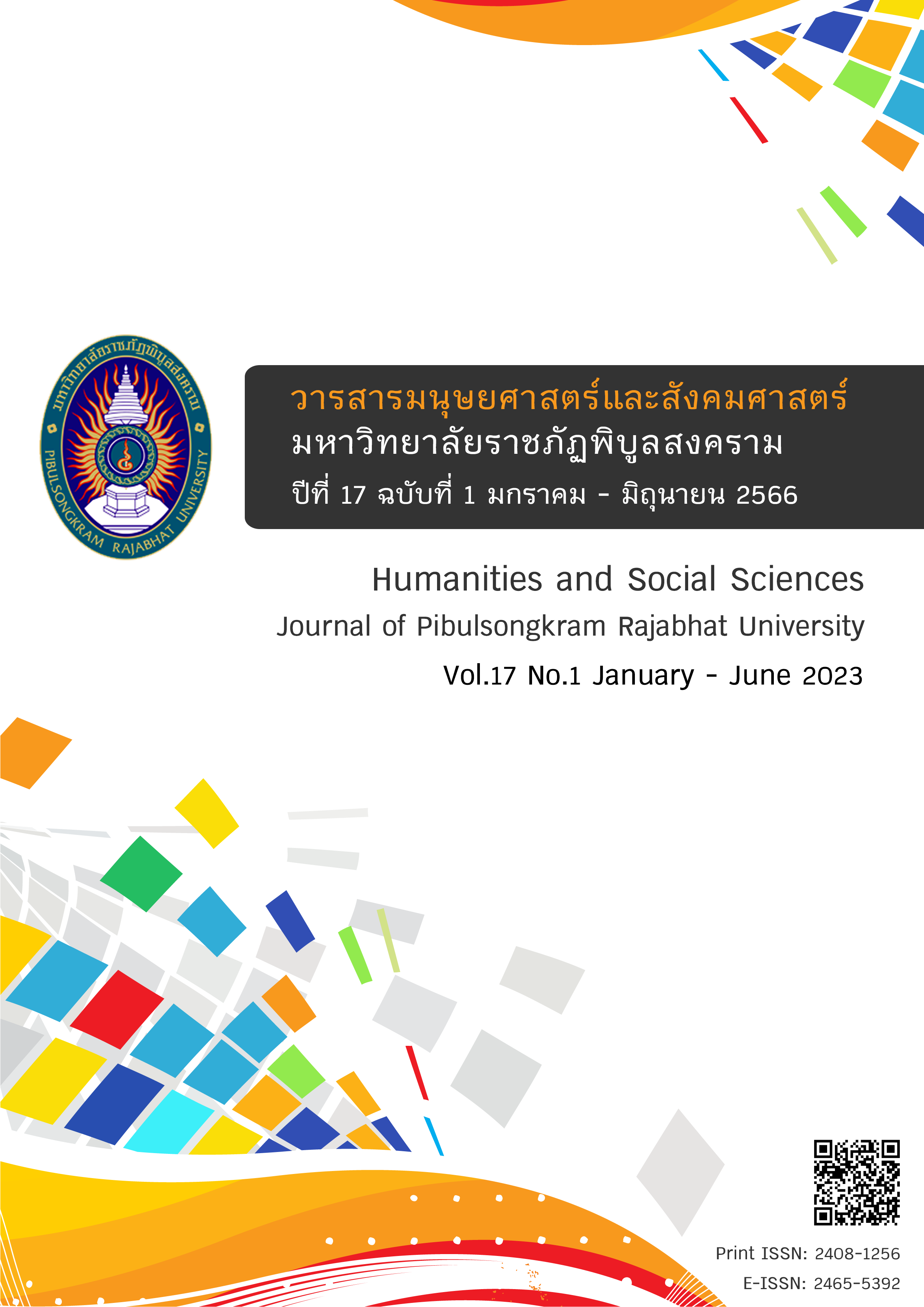The Perception of Visual Acuity to relieve Fatigue Symptoms From Technological Devices in the Digital Age
DOI:
https://doi.org/10.14456/psruhss.2023.2Keywords:
Visual fatigue, Perception, Natural visionAbstract
Nowadays, the world has been rapidly changing trend, and its impact continuously until the present. In 1970, the world was driven by development. Besides, the trend of global social transformation is characterized by a dynamic that generates relentless movements. Therefore, information technology is essential in economic development. Digital devices have been fulfilling human beings. However, using digital devices with misuse of gestures may affect the quality of life, especially for performance degradation. Interestingly, the study revealed that 90% of digital device users using devices for 16 hours per day. The mentioned behavior affects visual focusing and weakens the visual perception process, resulting in Cumulative Trauma Disorder. Especially symptoms caused by heavy eyesight for a long time called Visual Fatigue may affect life quality. For this reason, the mentioned problem is a silent threat that is undermining the global population. The study of Visual Perception theory is an alternative science-based on specialized medical techniques in Ophthalmology. When applied to the visual management process through training methods to help relax eye muscles. Besides, the symptoms of fatigue affect characteristics of determining the senses and movement direction. The direction determination process is similar to the principle of eye massage, resulting in the relief of chronic injuries, a natural eye restoration (Natural Vision) by mediating the natural process of the ophthalmic experience (Sense Organs) external stimuli. In other words, it can preserve eyes from digital devices that are then developed and technology and prevalent in the digital age.
References
Boyce P. (2014). Human Factors in Lighting (3th ed). Boca Raton: CRC Press.
Chang PC, Chou SY, Shieh KK. (2013) Reading performance and visual fatigue when using electronic paper displays in long-duration reading tasks under various lighting conditions. Displays technology.
De Kort, Y., & Veitch, J. (2014). From Blind Spot into the Spotlight. Journal of Environmental Psychology
Ip JM, Saw SM, Rose KA, Morgan IG, Kifley A, Wang JJ, et al. (2008). Role of near work in myopia :Findings in a sample of Australian school children. Investigative ophthalmology and visual science.
Janosik E, Grzesik J. (2003). Influence of different lighting levels at workstations with video display terminals on operators' work efficiency. Medycyna pracy.
Panagiotopoulou G,Christoulas K,Papanckolaou A,Mandroukas K.(2004).Classroom furniture dimensions and anthropometric measures in primary school. Applied Ergonomics.
Rancho Cordova. (2010). Eye Strain, Dry Eyes, Fatigue and Headaches Associated With Those Spending More Than Four Hours in Front of Digital Devices; Research Finds More People Are Suffering From Computer Vision Syndrome Affecting Learning and Work Productivity; VSP Offers Tips to Reduce Effects. PR Newswire. New York. 2010 Retrieved August 2, 2010
Rosenfield M. (2011). Computer vision syndrome: a review of ocular causes and potential treat- ments. Ophthal¬mic and Physiological Optics.
Rosenfield M. (2016).Computer vision syndrome (a.k.a. digital eye strain). Optometry in Practice
Sano S, Kanda T,Uemoto K,Hasegawa A,Kojima T, Miyao M.(2012).The effects of illuminance on visibility of reading tablet devices and e-paper. SID symposium digest of technical papers.
Sen A, Richardson S. (2007). A study of computer- related upper limb discomfort and computer vision syndrome. J Hum Ergol (Tokyo)
Sivaraman V, Rizwana JH, Ramani K, Price H, Calver R,Pardhan S,et al. (2015). Near work-induced transient myopia in Indian subject. Clinical and experimental optometry.
Uchino M, Yokoi N, Uchino Y, Dogru M, Kawashima M, Komuro A, (2013).Prevalence of dry eye disease and its risk factors in visual display terminal users : the Osaka study. American journal of ophthalmology.
Zheng Y, Liang H, Hao C, Fan L.(2008).Computer vision syndrome : A widely spreading but largely unknown epidemic among computer users. Computers in Human Behavior
Zovkic M, Vrbanec T, Dobsa J. (2011).Computer ergonomics in elementary school. In: Tihomir Hunjak , editor. Central European conference on information and intelligent systems; 2011 October 3; Varazdin Croatia: University of Zagreb, Faculty of organization and informatics Varazdin.
Downloads
Published
How to Cite
Issue
Section
License
Copyright (c) 2021 Humanities and Social Sciences Journal of Pibulsongkram Rajabhat University

This work is licensed under a Creative Commons Attribution-NonCommercial-NoDerivatives 4.0 International License.
Any articles or comments appearing in the Journal of Humanities and Social Sciences, Rajabhat Phibulsongkram University, are the intellectual property of the authors, and do not necessarily reflect the views of the editorial board. Published articles are copyrighted by the Journal of Humanities and Social Sciences, Rajabhat Phibulsongkram University.









